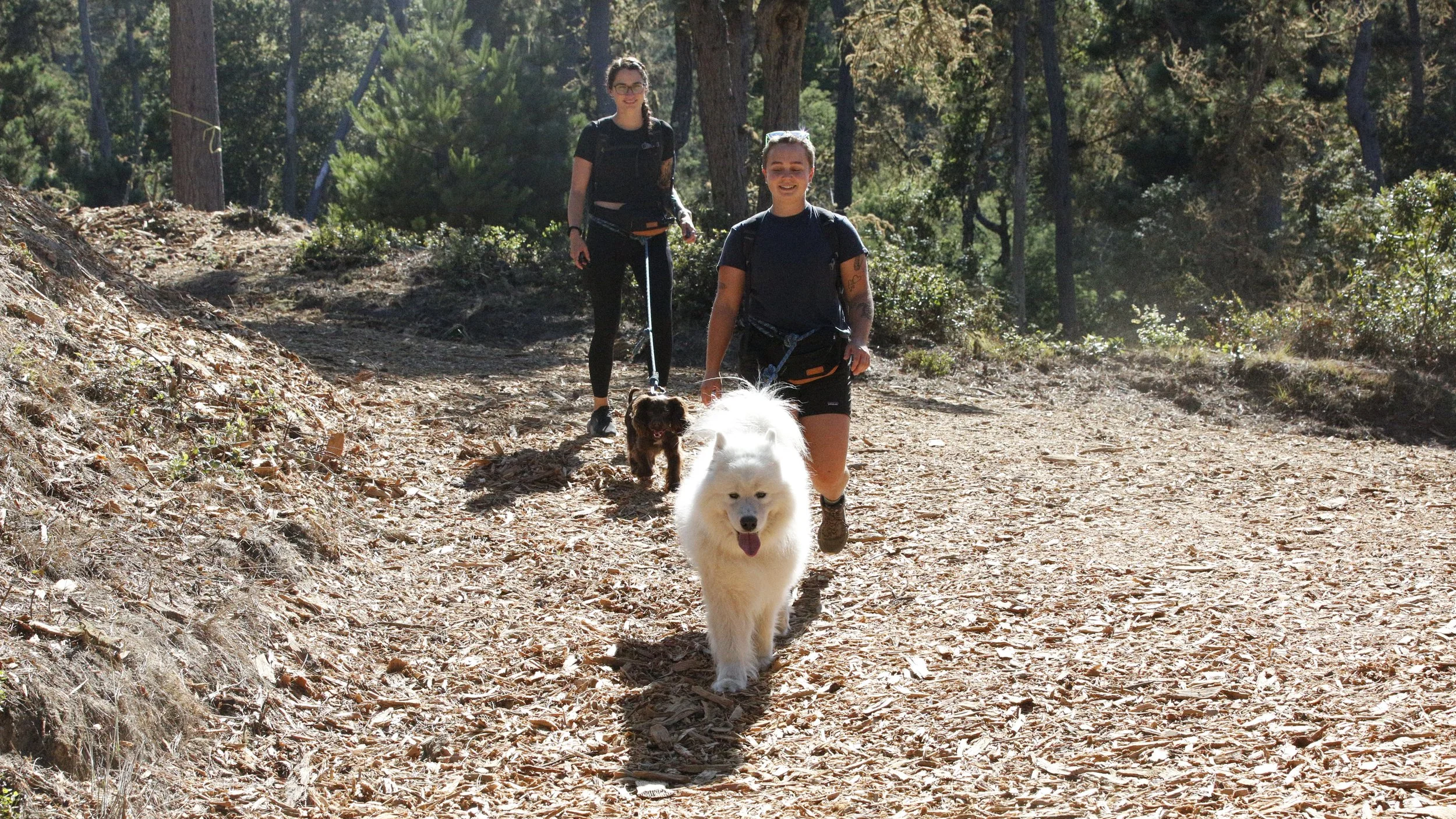
Why smaller packs are better for group walks
Pack walks, or group dog walks, can be one of the best ways for dogs to get exercise, enrichment, and socialization. When done thoughtfully, they provide structure, help dogs build confidence, and make every outing feel like an adventure with friends. But pack size matters. Smaller groups tend to create the safest, most enjoyable experience for dogs, while large groups, especially when managed by inexperienced dog walkers, can pose more risks than rewards.
The Benefits of Group Walks
Group walks give dogs something they can’t always get from a solo stroll. Walking alongside other dogs helps build social skills and confidence, especially for dogs who may be shy or overly excitable around new friends. The group dynamic also creates mental stimulation, as dogs learn to move together, follow a steady rhythm, and respond to the cues of a skilled walker. For high-energy dogs, group walks provide both physical exercise and the structured challenge of focusing in a social setting. Even calmer dogs benefit from the companionship and gentle stimulation of being part of a small pack.
The Negatives of Large Groups
The problems begin when pack sizes get too large. With many dogs at once, it’s challenging for a walker to give each one the individual attention they need. Subtle signs of stress or discomfort, like a tucked tail, a lip lick, or a stiff posture, can go unnoticed. This can allow tension to build between dogs until a conflict arises.
Large groups are also more difficult to manage safely in public spaces. If one dog reacts to another animal, a sudden noise, or a passing person, it can create a chain reaction that even an experienced handler may struggle to control. For smaller or timid dogs, being caught up in a big, boisterous pack can be overwhelming and stressful. And unfortunately, some large-scale group walks focus on volume over quality, with long hours spent transporting dogs in vehicles and less time spent actually walking.
Why Smaller Packs Work Better
Smaller groups create a more balanced and controlled environment. With just a few dogs at a time, walkers can carefully match temperaments, energy levels, and play styles to ensure everyone gets along. This thoughtful pairing makes for calmer, happier walks where every dog feels safe and comfortable.
Small packs also allow walkers to give more attention to each dog. They can monitor body language, adjust pacing, and provide enrichment like sniff breaks without worrying about juggling too many leashes at once. Dogs are more likely to enjoy themselves and less likely to feel overstimulated, overlooked, or pressured to keep up with a pace that doesn’t suit them.
From a safety perspective, smaller packs are far easier to manage. If something unexpected happens such as a loose dog runs up, a bike passes too close, or a loud noise startles the group, the walker can step in quickly and calmly. With fewer dogs, it’s easier to maintain control and ensure that each one remains safe.
The Takeaway
Group walks can be a wonderful way for dogs to enjoy exercise, companionship, and enrichment, but only when they’re done responsibly. Large packs come with risks, and those risks increase when handled by walkers without the proper training and experience. Smaller groups, on the other hand, strike the perfect balance: they give dogs the benefits of social walking while keeping safety, comfort, and individual care at the center.
At Monterey Dog, we believe less is more. Our group walks are intentionally small, thoughtfully matched, and always led by experienced, insured walkers. That way, your pup enjoys the adventure of a pack walk while still receiving the attention and care they deserve.
Ready to give your dog a safe and social adventure? Learn more about group walks with Monterey Dog.
